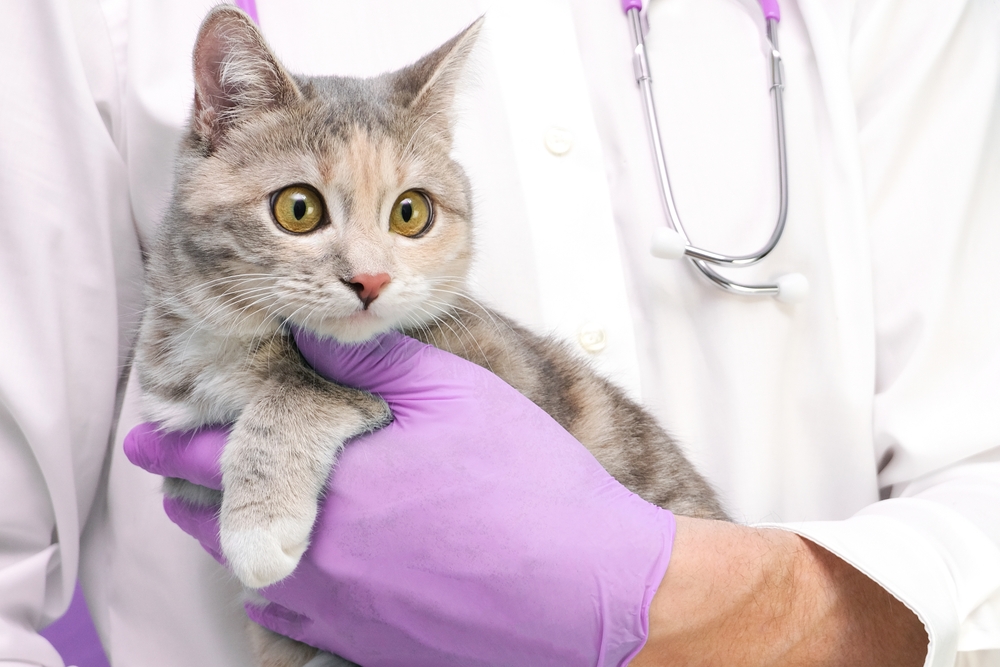The feline species is generally lauded for its mysterious and elusive nature—how cats not only conceal their inner lives but their physical selves, as well. Cat lovers worldwide appreciate and respect the reality that they likely will never fully understand their four-footed friends.
But, although a cat’s preference for privacy is admirable, their instinctive need to mask their internal health can also be their undoing. Undiagnosed arthritis can cripple a cat’s quality of life and shorten their lifespan.
Learn how to look past your cat’s secretive nature and see the truth about their arthritis pain in this guide from The Animal Clinic of Council Bluffs.
#1: As many as 90% of cats older than 12 have arthritis-related joint abnormalities
In one radiographic (i.e., X-ray) study, nearly every cat older than 12 had degenerative joint disease (i.e., DJD, an age-related deteriorative condition) along their spine or appendicular skeleton or limbs. The most commonly affected limb joints include the shoulders, elbows, hips, and tarsal (i.e., ankle) joints. By this age, as many as 50% of cats are also suffering from concurrent health conditions (e.g., urinary tract disease, diabetes, renal failure, or inflammatory bowel disease), which may intensify their pain or mean that their arthritis goes undiagnosed.
Also, many cat owners accept arthritis as a natural part of aging and do not seek veterinary care, sometimes despite obvious signs (e.g., stiffness, limping, or personality changes). Sadly, this can hasten disease progression, worsen suffering, and unnecessarily shorten the cat’s life.
#2: Young cats can suffer from arthritis, too
Although arthritis becomes more common with age, the condition isn’t exclusive to older cats. Recent studies report that arthritis affects an alarming 60% of cats older than age 3 and, worse, the condition can begin as early as 6 months of age.
Early onset arthritis can be caused by injury or trauma to a joint or be inflammatory, infectious, or immune-mediated. Sadly, because most owners aren’t educated on feline arthritis, the warning signs often go unnoticed—and therefore untreated—for years.
#3: Feline arthritis signs can resemble behavior or age-related problems
Until recently, no one—including veterinarians—recognized that feline arthritis was so prevalent. While this can be partly attributed to the fact that cats are less likely to receive regular veterinary care, their unique methods of expressing—or not—pain and discomfort are also to blame.
Advances in the feline behavior field have shed much-needed light on how cats manifest physical pain and suffering. Along with obvious indicators (e.g., limping, vocalizing, and stiffness), other, more vague signs that resemble misbehavior or age-related difficulties (e.g., vision impairment, litter box issues) include:
- Reluctance to jump or use stairs
- Mobility pattern changes (e.g., taking an alternate route to a favorite perch or resting place)
- Refusing to play or tiring quickly
- Stiffness
- House soiling
- Personality changes (e.g., irritability, aggression, fearfulness, isolation)
#4: Obesity can worsen feline arthritis
According to the Association for Pet Obesity Prevention, more than half all U.S.-owned cats (i.e., 59.5% or 56 million) are overweight or obese. Excess weight puts undue stress on each weight-bearing joint, and is compounded when cats perform naturally athletic actions (e.g., jumping up or down, climbing, chasing). This repeated trauma can accelerate cumulative joint damage, creating the perfect inflammatory environment for arthritis and leading to a vicious cycle, because the arthritic cat stops activity to avoid pain, gains additional weight, and becomes more uncomfortable and less mobile.

#5: Chronic arthritis is debilitating and can shorten your cat’s life
Arthritis pain can have tragic consequences for undiagnosed or unmanaged cats. Painful cats may behave aggressively and be difficult to live with or handle, while others may suffer from fall-related injuries, life-limiting pain, or obesity-related health consequences (e.g., diabetes, kidney failure). Sadly, many complications result in early, humane euthanasia.
#6: Arthritis is manageable for cats
Arthritis is an incurable condition, but doesn’t have to be a life sentence for your cat. Innovative medical treatments, along with pain relieving therapies, lifestyle changes, and weight management can successfully relieve chronic pain and inflammation and put the “pounce” back in your feline friend’s step.
If you believe your cat is exhibiting arthritis signs, schedule an appointment at The Animal Clinic of Council Bluffs.
#7: Preventive and proactive care may reduce arthritis severity in cats
With its multitude of causes, arthritis is unfortunately impossible to prevent in your cat. However, like any other disease, strategic proactive care can reduce your pet’s risk or minimize severity (e.g., arthritis is limited to one joint rather than multiple joints throughout the body).
Arthritis prevention strategies include:
- Ensuring your cat maintains a lean body weight
- Providing ramps, traction mats, and easy access to elevated surfaces
- Encouraging regular low-impact physical activity and play
- Replacing traditional litter boxes with low-sided styles
- Asking your veterinarian about feline joint supplements and mobility diets
Feline arthritis is a sneaky, often silent, threat to cat health and comfort. But, now the secret is out, and you can minimize its power by seeking prompt veterinary care or taking proactive steps to safeguard your cat’s joint health and mobility.
If your cat is demonstrating arthritic behavior, don’t wait— pounce on the problem by scheduling an appointment at The Animal Clinic of Council Bluffs as soon as possible.






Leave A Comment